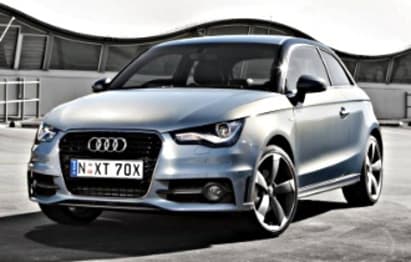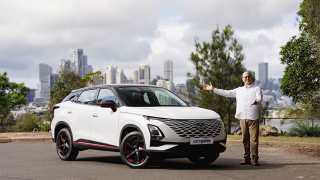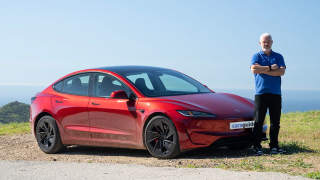
Audi A1 e-tron 2011 review
- Audi A1
- Audi A1 2011
- Audi A1 Reviews
- Audi Reviews
- Audi Hatchback Range
- Hatchback
- Audi
- Prestige & Luxury Cars
- Small Cars

The Wankel rotary is turning full circle. From an engine that failed to gain lasting favour --because of its high-revving and thirsty nature – although also loved by diehards for exactly those reasons -- the rotary is bidding for rebirth as an assistant to electric motoring.
It’s the combination Audi is betting on for the A1 e-tron, which has just gone on trial with a pilot fleet of 20 in Munich, and which we taste-tested in Japan.
This is a case where small size matters, Audi AG electric strategy engineer Heiko Seegatz says.
“We chose rotary for the range extender because it’s very small,” he says. “We could have built a V8 range extender but the car wouldn’t have a boot any more. The focus was on the package and our target was to have a fully usable car. So we looked for the smallest engine.”
TECHNOLOGY
The front wheels are driven via a single-stage transmission that taps into the 45kW of power -- rising to a peak of 75kW for short bursts -- and 150-240Nm of torque from an electric motor under the bonnet.
Power is drawn from a 12kWh bank lithium-ion battery pack, with a fast-charged three hours (or nine on the home socket) delivering an electric-only range of 50km. After this, the tiny 245cc rotary engine ‘range-extender’ and alternator generate 15kW of power to recharge the battery, giving an extra 200km.
Feeding from a 12-litre fuel tank, the 65kg engine fitted under the A1’s small boot floor offers obvious size, weight, quietness and smoothness advantages. The engine is roughly a 25cm x 25cm barrel – about the volume of an office kitchen coffee can – which is packaged to sit under a briefcase-sized hatch. Our test car had a ‘black box’ data logger sitting alongside the engine, but the car’s minder said this would disappear in the production version.
The rotary engine habit of high-revving has been limited to 5000rpm limit to keep a rein on fuel economy, which Audi pegs at 1.9L/100km (and emissions of 45g/km CO2) using the standard European formula.
Seegatz says the engine management system will also run it at about half the peak rpm, but with corresponding limited power output for the battery.
The rotary is brought into play by moving the single-stage tranmission’s shifter past D, R and N to ‘range’, but it will engage automatically if the battery nears empty. Steering wheel paddles are there not to change gears – there aren’t any – but to increase the amount of brake energy recapture that also feeds the battery.
VALUE
There’s no indication of price. But it could become more a question of whether – when the A1 e-tron comes to market – we are still seeing electric cars slugging a premium without the government rebates offered in other countries. Either way, expect the e-tron to come in well above the $42,500 top spec of the current A1 range.
Its rivals are lead by the $48,000 Mitsubishi i-MiEV, which in being the first electric to go on sale in Australia has been a groundbreaker. However it also faces some coming competition from the Holden (Chevrolet) Volt at an estimated $60,000, the Renault Fluence at under $40,000 plus battery lease costs, and the Nissan Leaf which is aiming for matching the total cost of ownership of a $25,000 Tiida.
DESIGN
It’s the same rounded, short-overhang hatch as a normal A1, with main external differences being the charge socket cleverly hidden behind a hinged grille logo, and the bloodshot eyes of its red-cased daytime running lights – keep those please, Audi. Oh, and the test car had ‘A1 e-tron’ emblazoned up the side, in case we forgot what we were driving. Likewise the interior differences were largely limited to white plastic panels – also badged -- on the doors and centre console, and some changes to instrumentation.
SAFETY
With the cost of prototype development, you’d think hints of a crash would prompt Audi engineers to swiftly pad the exterior with motoring journalists. We’re less expensive and far more expendable. But you can expect the production version to have the full array of airbags, brake helpers, stability and traction controls. And of equal interest to buyers will be the final protection systems to shield them from the battery voltage in the event of a crash.
DRIVING
Acceleration is smooth and linear – and feels swifter than the 10.2 official log for 0-100km/h. Keep your foot down and it gets close to the top speed of 130km/h pretty smartly. Driven back-to-back against the 90kW/200Nm turocharged 1.4-litre A1, the e-tron holds it own.
We started off on full electric, and then kicked the rotary in with little noticeable change except the extra noise. The hum of the rotary engine rises to drown the hushed whine of the motor, and subdue the constant background of tyre noise. Deceleration is marked when you back off the pedal, and then increasingly stronger as you use the paddles to increase recapture.
While the steering is very direct, it’s not overly talkative. However, the T-shaped battery pack’s weight distribution works to give the little car good balance, and there’s an eagerness to show off some deft footwork.
Even after a short run, the overall impression was one of a lively package with the potential for a fun drive.
VERDICT
We recently declared the rotary a failed technology, and may have to eat those words. While matching the engine to an electric motor means you can’t claim zero economy and tailpipe emissions, it keeps fuel figures to an admirable level while calming range anxiety. It might not be the best of either world, but it seems a good compromise for both.
RATING

AUDI A1 E-TRON
Price: TBA
Drivetrain: 75kW/240Nm electric motor, 12kWh lithium-ion battery pack, 15kW 245cc rotary engine
Transmission: single-speed reduction gear, FWD
Body: 3-door hatch, seats 4
Safety: N/A
Thirst: 1.9L/100km; 45g/km CO2
Range: 250km
Recharge: 3-hour fast charge, 9-hour household charge.
OTHERS TO CONSIDER
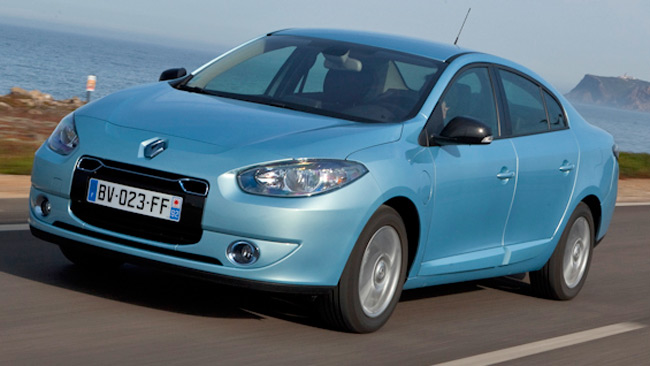 Renault Fluence ZE - compare this car
Renault Fluence ZE - compare this car
Rating: 3 out of 5 stars
Price: $40,000 + charging subscription TBA
Engine: 70kW/226Nm electric motor and lithium-ion batteries
Body: 4-door sedan, seats 5
Transmission: CVT, FWD
Thirst: 6 to 8 hour recharge, 185km range
Mitsubishi i-Miev - compare this car
Rating: 2.5 out of 5 stars
Price: $48,800
Motor: 47kW/180Nm with lithium ion batteries
Body: 5-door hatch; seats 4
Transmission: single-speed reduction gear, RWD
Thirst: Seven-hour charge; 155km range
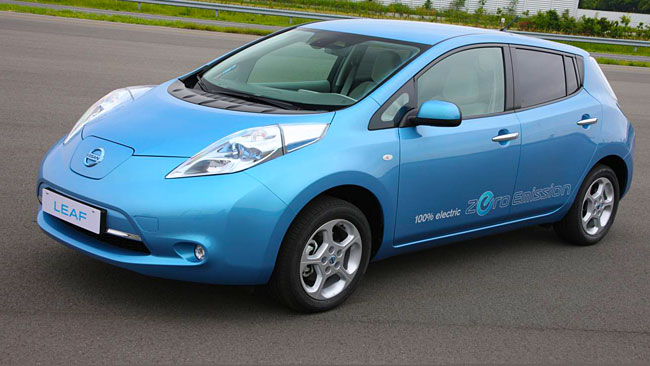 Nissan Leaf - compare this car
Nissan Leaf - compare this car
Rating: 3 out of 5 stars
Price: TBA
Motor: 80kW AC synchronous motor with lithium-ion batteries
Body: 5-door hatch, seats 5
Transmission: single-speed reduction gear, FWD
Thirst: 8-hour household charge or 3-hour fast charge, 130km range
Pricing guides
Range and Specs
| Vehicle | Specs | Price* | |
|---|---|---|---|
| 1.4 TFSI Ambition | 1.4L, PULP, 7 SP AUTO | $8,360 – 11,770 | 2011 Audi A1 2011 1.4 TFSI Ambition Pricing and Specs |
| 1.4 TFSI Attraction | 1.4L, PULP, 6 SP MAN | $7,920 – 11,110 | 2011 Audi A1 2011 1.4 TFSI Attraction Pricing and Specs |
| 1.6 TDI Attraction | 1.6L, PULP, 5 SP MAN | $6,710 – 9,460 | 2011 Audi A1 2011 1.6 TDI Attraction Pricing and Specs |
| 1.4 TFSI Sport | 1.4L, PULP, 7 SP AUTO | $10,450 – 14,300 | 2011 Audi A1 2011 1.4 TFSI Sport Pricing and Specs |
$6,995
Lowest price, based on 12 car listings in the last 6 months




